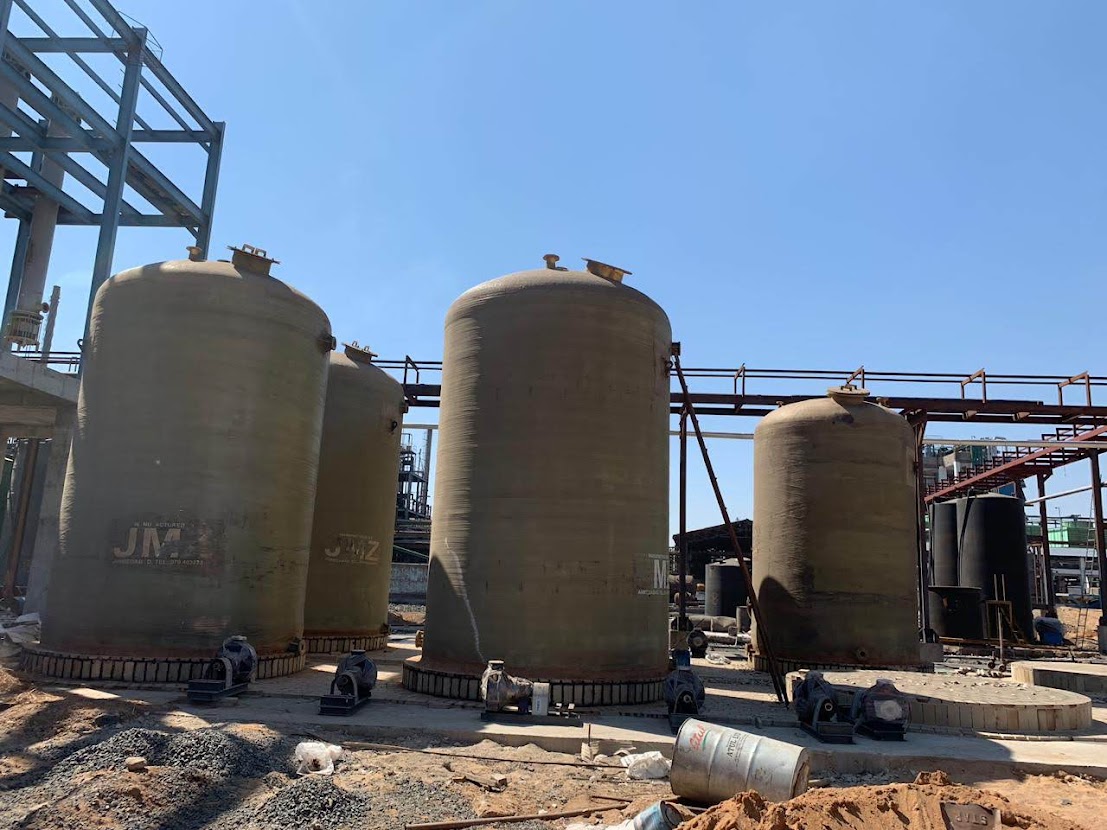- Home |
- FRP Storage Tank
FRP Storage Tank

Durable, Corrosion-Resistant Solutions for Liquid and Chemical Storage
Fiber Reinforced Plastic (FRP) storage tanks are a trusted solution for the safe and efficient storage of a wide variety of liquids and chemicals. Engineered using a composite of high-strength fiberglass and corrosion-resistant resin, these tanks are suitable for aboveground, underground, and overhead installations across numerous industrial environments.
Key Advantages
Lightweight & Easy Installation
FRP tanks are significantly lighter than their steel or concrete counterparts, allowing for easier handling, transport, and installation. This not only reduces logistical challenges but also lowers installation costs by minimizing the need for heavy-lifting equipment.Exceptional Corrosion Resistance
Unlike metal tanks, FRP tanks are immune to rust and corrosion, even when exposed to aggressive chemicals or harsh environmental conditions. This makes them ideal for storing acids, alkalis, solvents, and other corrosive substances.Non-Conductive & Spark-Safe
FRP’s non-conductive nature makes these tanks inherently safe for storing flammable or combustible liquids, minimizing the risk of static discharge or electrical sparks in hazardous environments.Extended Lifespan & UV Resistance
Built to withstand prolonged exposure to UV radiation, FRP tanks maintain their structural integrity and performance over time. Their resistance to weathering ensures low maintenance and long-term service life, even in outdoor applications.Customizable Design
FRP storage tanks can be tailored to your exact specifications. They are available in a wide range of shapes, sizes, and configurations, and can be equipped with features such as:Access hatches
Manways and nozzles
Ladders and platforms
Level indicators and fittings
Applications
FRP storage tanks are widely used in industries where chemical resistance, longevity, and safety are critical, including:
Chemical Processing
Water & Wastewater Treatment
Oil & Gas
Agriculture & Fertilizer
Pharmaceutical & Food Industries
Why Choose JMZCEL FRP Storage Tanks?
At JM Zhongkai Chemical Equipment LLP, we combine advanced composite technology with precision manufacturing to deliver FRP tanks that meet the most demanding operational requirements. Our tanks are built for performance, safety, and reliability, ensuring long-term value for your investment.
frequently asked questions
What are FRP storage tanks made of?
FRP (Fiber Reinforced Plastic) storage tanks are made by combining fiberglass with a thermosetting resin, such as polyester or vinyl ester. This composite material offers high strength, corrosion resistance, and durability, making it ideal for chemical and liquid storage applications.
What types of chemicals can be stored in FRP tanks?
FRP tanks are suitable for storing a wide range of corrosive and non-corrosive chemicals, including acids, alkalis, solvents, and wastewater. The resin type is selected based on the specific chemical and temperature conditions to ensure long-term compatibility.
Are FRP tanks suitable for outdoor use?
Yes, FRP tanks are UV-resistant and weatherproof, making them ideal for outdoor installations. Their non-corrosive nature and resistance to environmental degradation ensure long service life in both indoor and outdoor environments.
Can FRP storage tanks be customized?
Absolutely. FRP tanks can be custom-designed in various shapes, sizes, and orientations (vertical or horizontal). Additional features such as manways, nozzles, access ladders, level indicators, and support structures can also be incorporated based on project requirements.
How long do FRP storage tanks last?
When properly designed, installed, and maintained, FRP tanks can last 20 years or more. Their corrosion resistance and structural integrity help reduce maintenance costs and extend operational lifespan compared to traditional steel or concrete tanks.
What maintenance is required for FRP tanks?
FRP tanks require minimal maintenance. Regular visual inspections, occasional cleaning, and periodic checks for wear or chemical compatibility are generally sufficient to keep the tank in optimal condition.


